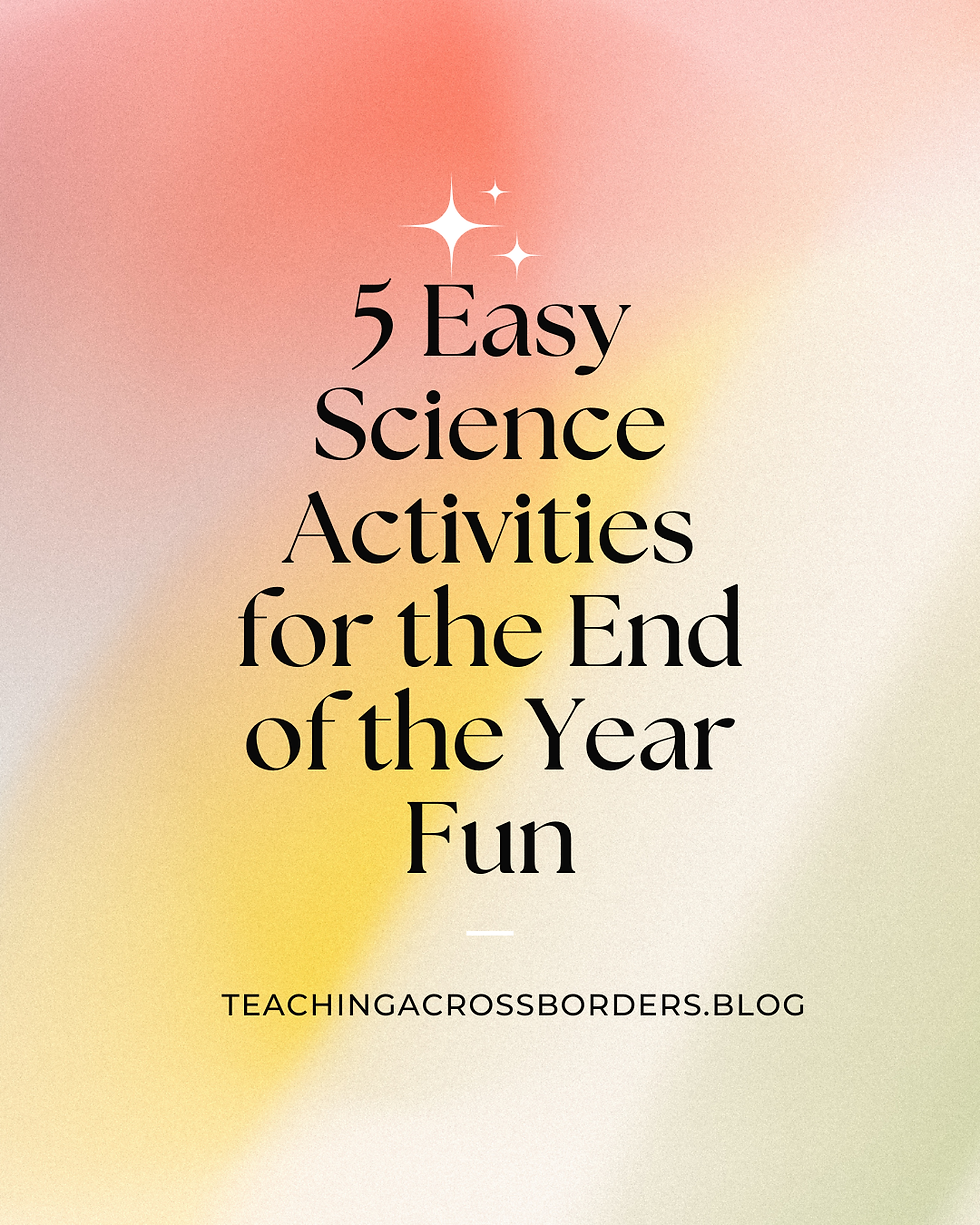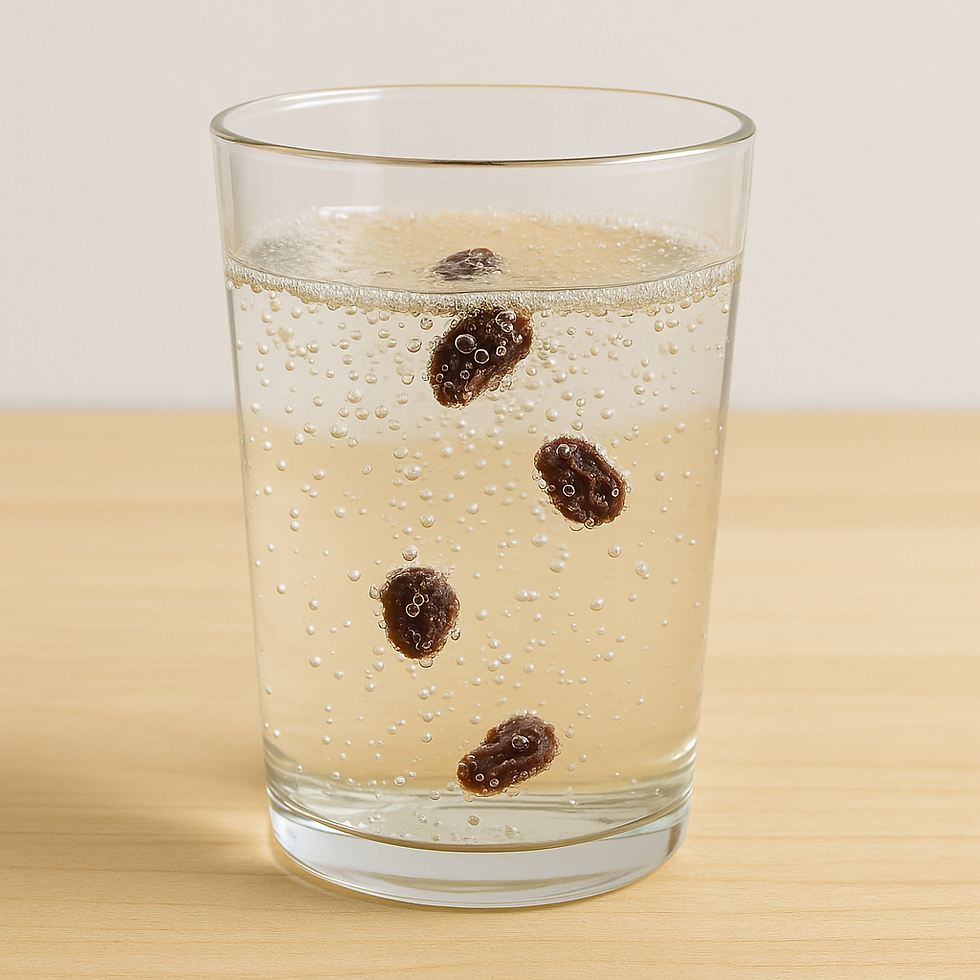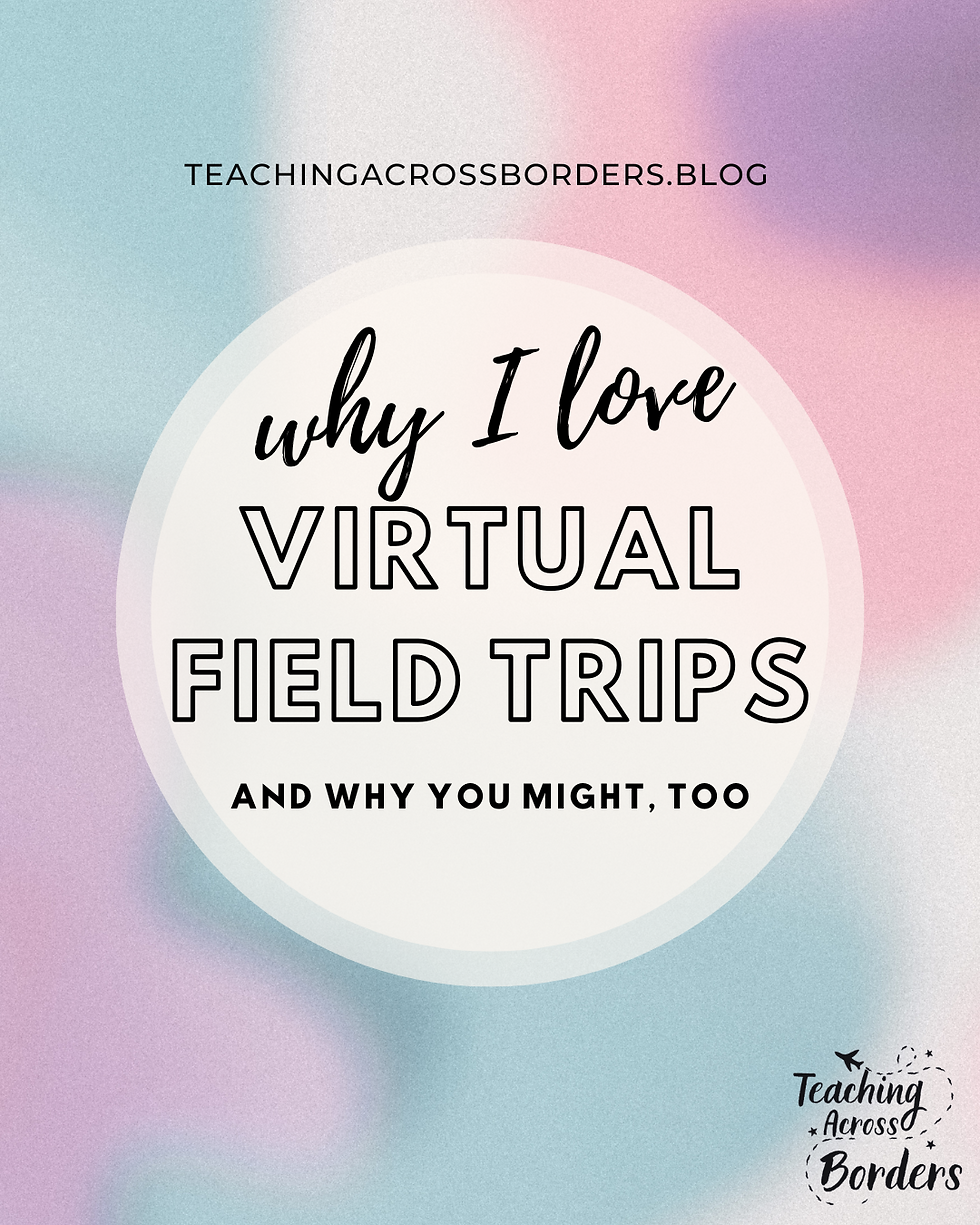5 Easy Science Activities for the End of the Year for Grades 3–6 (With Materials You Already Have!)
- Laura Swallow

- May 4
- 3 min read
Can you believe how close summer is?

It's the last month of school for many and kids are antsy. (let's face it, so are teachers!) So if you need some fun and engaging activities to fill the time and keep the kids exploring up until the very last day, I've got you.

🔬 1. Dancing Raisins – Observe Gas Bubbles in Action
Concept: Gas release, buoyancy, states of matter
Materials: Clear cup, carbonated water or clear soda, a few raisins
What to do: Pour the soda into the cup and drop in a few raisins. Watch what happens! The carbon dioxide bubbles stick to the wrinkly surface of the raisins, lifting them up. When the bubbles pop, the raisins sink again.
Why it’s great: It’s visual, fun, and leads to questions like “What else might float and sink like this?”

🌡 2. Melting Race – Test the Speed of Heat
Concept: Heat transfer, states of matter
Materials: Ice cubes, different surfaces (metal tray, paper towel, plastic lid, fabric, etc.)
What to do: Place ice cubes on different materials and observe which one melts the fastest. Students can make predictions and time the melting process.
Why it’s great: You can connect this to insulation, materials science, or even weather!

🌈 3. Walking Water – Explore Capillary Action
Concept: Water movement, absorption
Materials: Clear cups, paper towels, food coloring, water
What to do: Set up 3 cups: fill the two outer cups with colored water (e.g., red and blue), and leave the middle cup empty. Fold paper towels into strips and place them so they connect the cups. Watch over time as the colors “walk” into the middle cup and mix.
Why it’s great: It teaches absorption, color mixing, and patience (this one takes about an hour)!

🎈 4. Balloon Rocket – Investigate Motion and Force
Concept: Newton’s Third Law, force and motion
Materials: Balloon, string, straw, tape
What to do:Thread a long piece of string through a straw and tie the ends of the string to two sturdy spots (like chairs). Inflate a balloon (don’t tie it), tape it to the straw, and let it go! The balloon rocket zooms along the string.
Why it’s great: It’s a perfect intro to forces and motion, and students can experiment with different balloon sizes or string lengths.

🍽 5. Fizz Reaction – Make a Fizzy Reaction
Concept: Chemical reactions, acids and bases
Materials: Baking soda, vinegar, small cup, optional food coloring
What to do:Add a spoonful of baking soda to the cup, then pour in some vinegar. Watch the fizzy chemical reaction unfold!
Why it’s great: It’s classic, simple, and gets kids talking about real science vocabulary like reaction, gas, and acid.
🧠 Wrap-Up Ideas for Easy Science Activities
Each of these activities works great on its own, but you can turn them into a full lesson by adding:
A prediction chart
Observation journals
Exit slips (“What surprised you today?”)
Partner discussions or a mini-science fair presentation
Make sure you're on my email list to get the full lessons this week or my Patreon to have access to all my subscriber exclusive resources at any time!
You can subscribe here to get instant access to this lesson!
Final Tip: Keep a science bin with basics like baking soda, string, food coloring, vinegar, and balloons—you’ll be ready for science anytime with no stress. 🌟
Happy exploring!
Xx, Laura








Comments